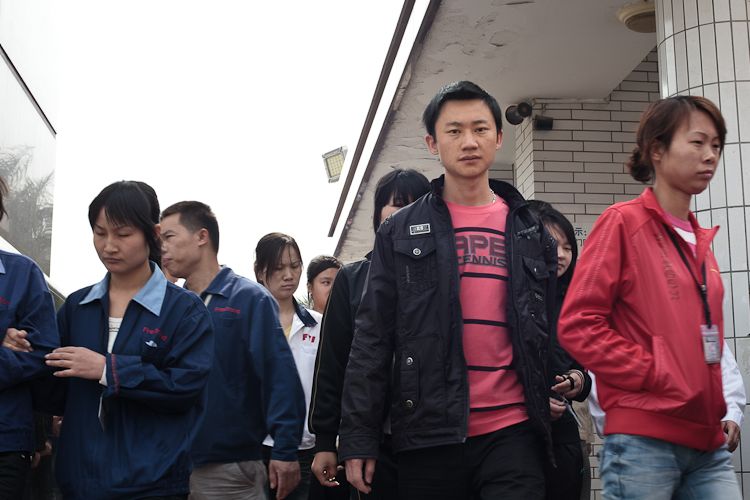This curriculum was created by Dr. Heidi Hayes Jacobs and her Curriculum 21 faculty.
This lesson aligns with Common Core State Standards for Grade 9-12 English Language Arts.
Common Core Standards:
Content:
- Textual analysis
- Inferences
- Arguments (claims and counter-claims)
- Ethics of outsourcing the production of goods for U.S. companies
- America’s responsibility for the welfare and safety of international workers
- Working conditions in China and other companies who accept outsourcing from the U.S.
- International rules/guidelines for workers’ safety
- Enforcement of international rules and guidelines for workers’ safety
- Host country’s responsibility for the welfare and safety of workers producing goods for U.S. companies
- Host company’s responsibility for the welfare and safety of workers producing goods for U.S. companies
- International worker’s responsibility for his/her own welfare and safety while producing goods for U.S. companies
Skills/Strategies:
- Provide textual evidence that an author uses to support the opinions stated in the text.
- Interpret inferences from informational text and determine which inferences lack support.
- Analyze the author’s claims and counter-claims in the text and explain the strength of each argument.
- Make strategic use of digital media (e.g., textual, graphical, audio, visual, and interactive elements) to explain both sides of the argument about the ethics of outsourcing the production of goods for U.S. companies.
- Develop arguments to support claims in an opinion essay format in writing, music, photographs, or any other digital format that the U.S. bears some responsibility for the welfare and safety of the international workers or that the U.S. bears no responsibility.
- Utilize Web 2.0 and other digital tools to present information, opinions, and evidence to specific audiences.
Key Terms
- Personal responsibility
- Carcinogen
- International Standards for Workplaces
- Compliance
- Epidemiologists
- Toxicology
- NGOs (non-government organizations)
- Types of Insurance: Unemployment, Worker Compensation, Workplace Environmental, Liability
- Occupational Health and Safety Laws
- Stringent
- Dry Batteries
- Zero Tolerance
- Collective Bargaining
Learning Plans and Activities:
-
Form discussion and production groups using Note Pub to take notes of the discussions, add pictures or video, summarize opinions, and share results about different levels of responsibility that exist in the outsourcing of the manufacture of goods for U.S. companies outside of America on social media sites such as Facebook.
-
Using the information in the articles provided by the Pulitzer Center make a list of U.S. companies who outsource the manufacture of goods to other companies.
-
Contact one of these companies to interview via telephone, Skype, Facetime, or other digital source to determine the company’s policy for the safety of the international workers. Also, ask if the company inspects the sites that manufacture goods for them and request information about those inspections.
-
Use WolframAlpha to make a comparison between the health and safety of U.S. workers with the health and safety of workers in other countries, such as China.
Assessments:
- Discussion group notes
- Results of discussion group opinions and results through pictures, music, video, graphs, or other digital formats
- List of U.S. companies who outsource work to international companies and contact person’s name, address, telephone number, and e-mail
- Copies of interviews conducted, notes of interviews conducted, copies of inspections conducted by U.S. companies
- Data collected and analyzed on WolfamAlpha
Resources:
- Loretta Tofani. “Do U.S., Utah Companies Share the Blame?” Salt Lake Tribune. October 24, 2007.
- Loretta Tofani. “Loretta Tofani discusses her four-part series on C-Span.” C-Span. October 26, 2007.
- Loretta Tofani. “'Cheap Imports' from China: Who Pays the Real Costs?” KCRW’s To the Point. October 26, 2007.
- Loretta Tofani. “They Pay the Cost for China’s Cheap Labor.” Star-Ledger. December 16, 2007.
- Loretta Tofani. “Safety Rules for Foreign Labor Pushed.” Salt Lake Tribune. December 8, 2007.
- Loretta Tofani. “American Imports, Chinese Deaths.” October 27, 2007.
- Loretta Tofani. “China Powerless to Fight the Poison.” Salt Lake Tribune. October 23, 2007.
- Loretta Tofani. “China: Sick from Furniture Fumes.” Salt Lake Tribune. October 22, 2007.
- Loretta Tofani. “China: Primitive Machines Take Digits and Limbs.” Salt Lake Tribune. October 22, 2007.
- Loretta Tofani. “China: The Human Cost of Doing Business.” Salt Lake Tribune. October 21st, 2007.
- Loretta Tofani. “China: Deadly Toxic Exposures.” Untold Stories. October 5, 2007.
- Loretta Tofani. “China: Amputations From Unsafe Machinery.” Untold Stories. October 4, 2007.
- Pulitzer Center
- WolframAlpha
- Note Pub
This unit has been designed for grades 9-12. The recommended timeframe is 4-6 weeks.
This curriculum was created by Dr. Heidi Hayes Jacobs and her Curriculum 21 faculty.
